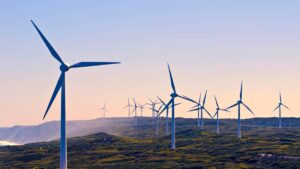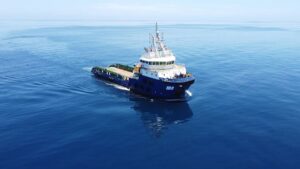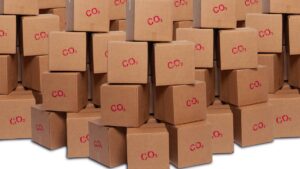Partners, economics add to the long lead AFE has built for its hydrogen project

Pic: Vertigo3d / E+ via Getty Images
Australian Future Energy’s GEAP already has cost and scale advantages over other hydrogen projects but there are more arrows in its quiver to keep it firing.
The Gladstone Energy and Ammonia Project (GEAP) is a coal gasification to ammonia project that is expected to produce about 230,000 tonnes per annum (tpa) of ammonia and 14 petajoules of pipeline natural gas, which is equal to about 91,000tpa of hydrogen,.
Not only is this well above the usual 500tpa to 5,000tpa proposed by green hydrogen projects in the Gladstone region, the company also expects to achieve this at just US$1.50 per kilogram of hydrogen, well below the long-term goal of US$2/kg for green hydrogen.
Additionally, AFE plans to get around the thorny problem of carbon dioxide emissions by capturing and utilising it rather than trying to store it underground.
With these advantages, it is little wonder that some strong partners have endorsed the project.
The most recent of these is leading Japanese trading company ITOCHU Corporation, which signed a Memorandum of Understanding for potential investment and partnering into AFE and GEAP.
“ITOCHU coming on board as a partner has been a long time in the making with probably six to seven months of due diligence and negotiations,” chief executive officer Kerry Parker told Stockhead.
“That’s been a result for us and it’s in many ways a significant tick of validation for the work that we’ve done.”
While AFE has already reached very detailed short form agreements for the offtake of ammonia and natural gas, ITOCHU’s entry also raises the possibility that the 5.15 trillion yen ($60bn) Japanese company could commit to its own offtake.
Further highlighting the confidence that its partners have in the advanced GEAP, Parker noted that engineering partner SNC-Lavalin – a Canadian global engineering group – has been funding all costed work to date at their own risk.
“It’s been a significant contribution for us in that we’ve not only got quality engineering done, but also that when we go out with any documents like that, we’ve got their brand on it,” he added.
SNC-Lavalin has undertaken a detailed pre-feasibility study for GEAP and is currently working on the front-end engineering design aspects.
Government support and hydrogen aggregation
AFE has also received strong government support at all levels on both sides of the political fence with the Queensland state government granting GEAP coordinated project and significant project status at the end of 2018.
This is thanks to the scale as well as potential for the project to generate some 1,000 direct jobs during construction and about 250 direct ongoing operating jobs with a further 1,250 indirect ongoing operating jobs.
Parker added that the company has also received strong support from the local government, noting that Gladstone’s acceptance of such projects was one of the reasons why AFE had opted to site its project there.
He also sees the company as a potential aggregator for green hydrogen projects in the region and a real “enabler” for the green hydrogen industry in Gladstone.
“Everyone recognises that green hydrogen is the long-term goal, but you have got to have a pathway to getting there and the small size of the projects proposed in and around the Gladstone region means they are going to have trouble finding offtake,” Parker explained.
“We have got about 15% to 20% buffer in our ammonia processing plant to play with so we can provide those smaller green hydrogen projects with a natural home for their offtake and really assist in enabling that green hydrogen industry to get up in Gladstone.”
GEAP economics and funding
GEAP’s major operating cost is its coal supply and the project’s ability to use lower quality coal means that it is not competing with export quality coal and is responsible for the low cost of production.
And it shows in the numbers.
Besides the expected production cost of US$1.50/kg of hydrogen, the PFS has estimated net present value (NPV) and internal rate of return (IRR) at $AUD 850m and 34% respectively.
NPV and IRR are both measures of a project’s profitability.
Capex has been estimated at about $AUD 1bn while EBITDA is expected to be $AUD 180m per annum.
Interestingly, AFE has not included any potential revenues from CO2 utilisation with Parker saying that the company had not tried to “gild the lily”.
On the funding front, the company has already secured a Northern Australian Infrastructure Facility (NAIF) draft terms sheet for a $AUD 300m debt facility as well as a construction finance facility terms sheet for US$650m from a Swiss finance group.
“With ITOCHU coming in, we will start to ramp up the funding process now,” Parker noted.
“Ultimately, whoever the offtake partners are, we will look to them for a portion of the equity contribution.”
AFE is currently freeing some additional equity that will allow it to ramp up its environmental impact statement activities and permitting process.
Timeline to hydrogen production
The company expects to have all permitting and approvals completed by the end of 2022, putting it in the position to make a final investment decision.
Construction will take about two years with Parker expecting GEAP to start production by the end of 2024.
This article was developed in collaboration with Australian Future Energy, a Stockhead advertiser at the time of publishing.
This article does not constitute financial product advice. You should consider obtaining independent advice before making any financial decisions.
Related Topics
UNLOCK INSIGHTS
Discover the untold stories of emerging ASX stocks.
Daily news and expert analysis, it's free to subscribe.
By proceeding, you confirm you understand that we handle personal information in accordance with our Privacy Policy.








